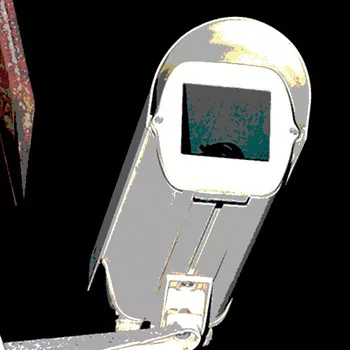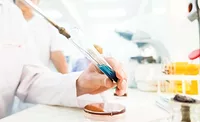Video Helps Serve Up Safe Food

Food safety is getting more attention today than ever before. The unfortunate truth is that we need to be concerned about both inadvertent and deliberate contamination. Accidental contamination can be the result of poor controls or procedures in the food chain or simple mishandling and violation of regulations that precisely dictate food management standards. Intentional contamination has been a growing concern since it was highlighted in the 9/11 Commission report as a key vulnerability for the United States (as a potential act of terrorism). As food moves from farm to fork, the closer it gets to the point at which it is consumed, the greater the challenges associated with keeping it safe.
Video surveillance is an invaluable tool for maintaining food safety in grocery stores, supermarkets, quick-service restaurants (QSRs), deli/cafes and other retail food service outlets. Using video strategically, quality assurance (QA), loss prevention (LP) and management professionals can more effectively detect warning signs of potential mishandling or adulteration of food that could result in illnesses, liability and needless damage to the brand.
Supply Chain Challenges
There are many stops along the way as food moves from the field to the consumer’s table. Each link in the processing and distribution chain has its own unique challenges, but the end of the line where the food reaches the consumer is the place and time at which food is particularly vulnerable.
First, food has often been in transit for quite a while by the time it reaches the retail outlet. As a perishable commodity, food is in a constant state of decay from the moment it is pulled from the vine, the ground or the pasture. Since the retail outlet is the last stop before the dining room table, food is naturally completing its lifespan and is more likely to be compromised due to spoilage.
Second, as food reaches retail outlets, there are more and more people touching it, increasing the odds of mishandling, damage or contamination—either intentional or accidental. The food has been passed through the maximum number of outlets and may suffer from mishandling or inadequate storage temperatures along the way.
In the retail outlet, it is more difficult to control exposure. This is particularly true in a grocery store, where consumers may handle food and then replace it on the display, causing additional damage and contamination.
For all of these reasons, protecting food at the retail level is exceptionally challenging and requires careful surveillance and management.
Video Surveillance
“Video surveillance” may bring to mind images of dusty VCRs, piles of tapes and boxy cameras protruding from the walls. In the past, hours of wading through endless footage to find the precise 90 seconds of video needed left LP and QA professionals with a gag reflex when it came to using video. But times have changed, and the introduction of Internet protocol (IP) technology has made video easy to capture, review and share from a computer.
Today, technology such as network video cameras can be used to combat food contamination and loss. Because these video cameras run on an existing information technology network, images can be quickly and easily captured, reviewed and shared, making network video a resource for a broader audience on a daily basis. Through sophisticated video management software, video can corroborate data from other key systems such as point-of-sale, access control or alarm systems. Network video enables enterprise-level access to video, with remote access just as easy as on-site access. Video can be seen by corporate management, the regional manager and the store manager in an instant—all from different access points as needed. Network video enables the regular, proactive use of video, making it a valuable resource for QA and LP professionals when it comes to ensuring food safety.
Further benefits can be gained by incorporating the use of video analytics. Today’s technology can allow the user to set up a network of virtual surveillance in any area, 24/7. Video analytics have the capability to identify any one of a number of anomalies and alert the security staff or operations teams. Sophisticated software programs can identify furtive movement, objects left behind or movements in key areas. This technology can help food safety professionals identify and investigate suspicious activities that may be tell-tale signs of intentional contamination.
Public view monitors (PVMs) offer “plug and play” value that many retailers have not yet considered. A liquid crystal display monitor with an integrated camera is easy to deploy to provide instant coverage of a particular area without running cable, purchasing multiple pieces of equipment or calling for a major rollout. PVMs serve as an immediate, overt deterrent.
Most significant about the advancements in video surveillance technology is that they make video a completely accessible tool for creating awareness of what’s going on in the business day-to-day and for making better business decisions—in this case, to improve food protection.
Surveillance Success
The key to successfully using video surveillance to ensure food safety lies in the execution—selecting the right tool for the job, establishing effective processes to ensure consistency and assigning management of the system to responsible parties in the retail organization. The following are some of the areas where video supports the maintenance of food safety.
Verifying Procedures
Ensuring that each and every employee handles food properly is critical to a food service operation. In a QSR environment, video positioned to cover key areas where food is prepared and handled can help management pinpoint risk areas and training needs among employees. Managers can position cameras to view food prep operations and check that proper procedures and quality assurance guidelines are being followed. This use of video can save time and money and make the process immensely more effective for the operator and the consumer.
In a grocery or supermarket environment, video can be used similarly to guarantee that produce and meat are being properly placed, and removed and replaced with fresh items as necessary.
This oversight of operations can take place at the store level, or at the corporate level using network video. Video is a powerful tool for corporate headquarters to verify that every store is following food safety procedures completely and consistently.
Training Employees
Video is an invaluable tool for training employees. For one thing, video captures actual examples of the right and wrong ways to do things and can then be used for instruction. Additionally, video can be used to monitor new employees and quickly identify an inadvertent harm-causer before he/she inflicts thousands of dollars of damage on the business. Consider a deli/café, where deli meats, cheeses and vegetables are kept conveniently on the line all day long to facilitate quick preparation of sandwiches for customers. Items that have been kept out throughout the day should not be returned to their original refrigerated containers for reuse. They should be disposed of at the end of the day and fresh perishables used the following day. The eager new employee may think she is saving the company money by salvaging the day’s unused items, while unintentionally subjecting the company to millions in damages from a potential food poisoning lawsuit. Video provides an excellent way to monitor new employees to ensure they have been properly trained and to identify and correct errors as soon as possible.
Maintaining Equipment
Video can be used to verify and document the proper operation and maintenance of food preparation equipment. Whether it be grinders, cutting apparatus or other tools related to food processing, using video to monitor equipment and equipment operators is a good idea. Cameras located in freezers and walk-in coolers will give managers visibility into those areas’ organization, cleanliness and stock rotation. Ensuring that equipment is operated and maintained properly is just as critical as monitoring the employees in the store.
Deterring Criminal Activity
Video coverage provides a deterrent to some who would be knowingly negligent with food or would intentionally contaminate food. By strategically placing cameras, public view monitors and signage announcing video coverage, retailers and QSRs can deter those who know they are being watched and will be caught. “Before it happens” is the best time to stop food contamination.
Providing Transparency
Retail food service outlets need customers to feel that the location is clean and well kept. In many cases, customers are not altogether pleased that their food is being prepared by a 16-year-old with a wry sense of humor and little dependence on his job. Transparency is one way to put customers’ minds at ease, and monitors serve this purpose beautifully. Installing a camera to cover the main food preparation areas and displaying video on a monitor at the service counter give customers a sense of security and make that 16-year-old less likely to “joke around” in the kitchen with patrons’ food.
Investigating Problems
Use video to determine the extent of a contamination incident. In case a problem is identified, managers can review video to determine where in the process the contamination occurred, who was at fault and the scope of food contaminated. For example, video showing a disgruntled former employee injecting a substance into cartons of orange juice at a grocery store refrigerated case will be handled much differently than video that reveals an employee unknowingly placing produce in a meat-handling area.
Recordkeeping
Video can also be used as a record to defend the brand in case of an alleged or actual contamination. Consider the infamous Domino’s Pizza video that hit YouTube, showing a couple of renegade employees doing distasteful things with the food. The video severely harmed the Domino’s brand, but what if the company had video coverage of the preparation areas? They could have investigated whether the two employees had truly disposed of the food or if it was passed to a customer. Domino’s would have also had video from hundreds of stores across the country to share with the media, showing how employees are monitored and how processes work on a regular basis. As it turned out, without this video, Domino’s had no way to defend itself against disgusted customers and eager media, with only a promise—but no proof—that the behavior in the video was not a typical occurrence. Effective network video could have greatly reduced the damage inflicted on Domino’s by those two employees.
Conclusions
Where food safety is concerned, video provides indelible proof of how food is handled or stored, serving as an investigative tool when problems do occur and a strong deterrent to employees and would-be criminals.
The list presented here is not comprehensive, but merely describes some best practices. As video continues to become just one more data source that can be used to run the business better, QA and LP professionals need only use their ingenuity to explore all the ways in which video can help to ensure the safety and health of customers, employees and the foodservice business.
Eric White serves as Director of Retail Strategy for Wren Solutions. He has 20 years of experience in loss prevention, asset protection and physical security, having served at Walmart and The Home Depot. He has been awarded Diplomate status for innovative work and leadership in the private sector by the American Board for Certification in Homeland Security (ABCHS), and serves on the ABCHS board of directors. He can be reached at eric.white@wrensolutions.com.
Looking for quick answers on food safety topics?
Try Ask FSM, our new smart AI search tool.
Ask FSM →








